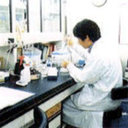The epithelium takes center stage in allergic keratoconjunctivitis.
کلید واژه ها
خلاصه
OBJECTIVE
To investigate the role of the epithelium in severe allergic conjunctivitis.
METHODS
We first investigated the expression of protease-activated receptors (PARs) in cultured human conjunctival epithelial cells and fibroblasts by reverse transcription-polymerase chain reaction. Next, we examined whether mite allergen-stimulated cells release chemokines and whether physiological protease inhibitors such as secretory leukocyte protease inhibitor (SLPI) and α1-antitrypsin can inhibit their production. We also looked at the expression of thymic stromal lymphopoietin (TSLP) in giant papillae of patients with vernal keratoconjunctivitis and examined whether the as Toll-like receptor 3 ligand polyinosinic:polycytidylic acid (poly I:C) can induce expression of TSLP in cultured human conjunctival epithelial cells.
RESULTS
PAR 1, PAR2, and PAR3 were expressed in cultured human conjunctival epithelial cells and fibroblasts at mRNA level. These epithelial cells released interleukin (IL) 6 and IL-8, with an upregulation in their gene expression, in response to the serine protease activity of mite allergens. This response was inhibited by SLPI and α1-antitrypsin. Transforming growth factor β1 decreased the production of SLPI in corneal and conjunctival epithelial cells. TSLP was expressed in giant papillae epithelium in patients with vernal keratoconjunctivitis at mRNA and protein levels. Poly I:C induced expression of TSLP in cultured conjunctival epithelial cells at mRNA level. Costimulation with TSLP and IL-33 had a synergistic effect for IL-13 mRNA expression in cultured human mast cells.
CONCLUSIONS
Imbalance between protease of mite allergens and innate protease inhibitors of the epithelium may induce inflammation and disrupt barrier function. Viral infection may induce expression of TSLP via Toll-like receptors and release IL-33 by necrosis. These phenomena promote excessive allergic reactions; hence, the epithelium takes "center stage" in allergic conjunctivitis.



